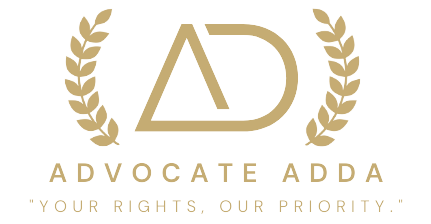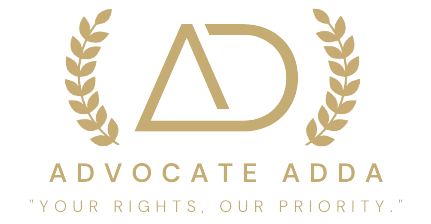Call us now:
Business Contracts
Business Contracts Starting at ₹999 + Govt Fee
Non-Disclosure Agreement (NDA) Overview
A non-disclosure agreement (NDA), also known as a confidentiality agreement, is a legally binding contract designed to protect proprietary information. By restricting the disclosure of sensitive data to unauthorized third parties, NDAs ensure the secrecy of trade secrets, business plans, software code, and more.
Consultants and agencies, who often handle confidential information from multiple clients within the same industry, frequently enter into NDAs to uphold legal obligations and maintain client trust.
Types of Non-Disclosure Agreements

Service Level Agreement (SLA) in Brief
An SLA is a contract between a service provider and its customer that outlines the expected level of service and how it will be measured.
- Service definitions: What services will be provided?
- Service levels: Specific performance targets.
- Measurement metrics: How will performance be measured?
- Reporting requirements: How will performance data be collected and reported?
- Escalation procedures: What happens if service levels are not met?
- Penalties and remedies: Consequences for non-compliance.
- Term and termination: Duration of the SLA and conditions for ending it.
- Availability: How often is the service available?
- Response time: How quickly is a request addressed?
- Resolution time: How long does it take to fix a problem?
- Accuracy: How often are tasks done correctly?
- Customer satisfaction: What do customers think?
Franchise Agreement
A franchise agreement is a legal contract between a franchisor and a franchisee that outlines the terms and conditions of
a franchising relationship. It establishes the rights, responsibilities, and obligations of both parties.
1. Key Elements of a Franchise Agreemen
2. Types of Franchise Agreements
3. Benefits of Franchising
Considerations for Franchisees
Master Service Agreement (MSA)
A Master Service Agreement (MSA) is a comprehensive contract between a service provider and a customer that outlines the terms and conditions for providing services over an extended period. It serves as a foundational document that establishes the overall framework for the business relationship.
Key Components of an MSA
- Scope of Services: Defines the specific services to be provided and their deliverables.
- Term and Termination: Establishes the duration of the agreement and conditions for termination.
- Payment Terms: Outlines payment schedules, invoicing procedures, and dispute resolution mechanisms.
- Confidentiality: Addresses the protection of confidential information shared between the parties.
- Intellectual Property: Specifies ownership rights for any intellectual property created during the course of the agreement.
- Governing Law: Determines the applicable laws and jurisdiction for resolving disputes.
- Force Majeure: Excuses parties from performance in the event of unforeseen circumstances beyond their control.
- Amendments and Waivers: Establishes procedures for modifying the agreement or waiving certain provisions.
- Notices: Specifies how communications between the parties should be made.
- Severability: Ensures that if one part of the agreement is found to be invalid, the rest remains enforceable.
Benefits of an MSA
- Efficiency: Streamlines the contracting process for future projects or services.
- Clarity: Provides a clear framework for the business relationship.
- Risk Management: Helps mitigate risks and disputes.
- Cost Savings: Can potentially reduce transaction costs over time.
Considerations for Drafting an MSA
- Specificity: Ensure that the scope of services is clearly defined and measurable.
- Flexibility: Consider including provisions for amendments or modifications to accommodate future changes.
- Risk Allocation: Carefully allocate risks between the parties based on their relative bargaining power and expertise.
- Legal Counsel: Seek legal advice to ensure that the MSA complies with applicable laws and regulations.
By carefully drafting an MSA, service providers and customers can establish a solid foundation for a long-term and successful business relationship.
Shareholders Agreement
A Shareholders Agreement is a contract between the shareholders of a company that outlines their rights, responsibilities, and obligations in relation to the company’s ownership and management. While a company’s articles of association govern its external relationships, a shareholders agreement provides a more detailed framework for internal governance.
Key Provisions in a Shareholders Agreement
- Ownership Structure: Specifies the percentage ownership of each shareholder and how shares can be transferred or acquired.
- Voting Rights: Determines how shareholders vote on company matters, including the election of directors, approval of financial statements, and major corporate decisions.
- Management Control: Outlines the roles and responsibilities of directors and other management personnel.
- Dividend Policy: Establishes guidelines for the distribution of dividends to shareholders.
- Preemption Rights: Grants shareholders the right to purchase additional shares before they are offered to outsiders.
- Drag-Along Rights: Allows a majority shareholder to force minority shareholders to sell their shares if a third party makes an offer to purchase the company.
- Tag-Along Rights: Allows minority shareholders to require a majority shareholder to sell their shares if a third party makes an offer to purchase the company.
- Buy-Sell Agreements: Specifies the terms and conditions under which a shareholder’s shares must be bought or sold upon certain events, such as death, disability, or retirement.
- Dispute Resolution: Establishes procedures for resolving disputes between shareholders.
Benefits of a Shareholders Agreement
- Clarity and Certainty: Provides a clear understanding of the rights and obligations of each shareholder.
- Protection of Minority Shareholders: Safeguards the interests of minority shareholders by addressing issues such as voting rights and preemption rights.
- Facilitates Business Transactions: Can make it easier to raise capital or sell the company by providing a clear framework for ownership and management.
- Dispute Resolution: Helps prevent and resolve disputes between shareholders, avoiding costly litigation.
It is essential to consult with legal counsel to ensure that the shareholders agreement is tailored to the specific needs and circumstances of the company.
Would you like to know more about specific provisions or examples of shareholders agreements?
Joint Venture Agreement (JVA)
A Joint Venture Agreement (JVA) is a legal contract between two or more parties who agree to collaborate on a specific project or business venture. In a JVA, the parties pool their resources, expertise, and assets to achieve a common goal.
Key Elements of a JVA
- Purpose: Clearly defines the objectives and scope of the joint venture.
- Contributions: Specifies the contributions of each party, including capital, assets, technology, or expertise.
- Ownership Structure: Determines the ownership interests of each party in the joint venture.
- Management and Control: Outlines the decision-making process and assigns responsibilities for managing the joint venture.
- Profit Sharing: Establishes how profits and losses will be allocated among the parties.
- Exit Strategy: Specifies the terms under which a party can withdraw from the joint venture and the procedures for valuing and transferring their interest.
- Dispute Resolution: Establishes mechanisms for resolving disputes between the parties.
- Confidentiality: Addresses the protection of confidential information shared between the parties.
- Term and Termination: Sets forth the duration of the joint venture and conditions for termination.
Benefits of a JVA
- Shared Risk and Costs: By pooling resources, parties can reduce their individual risks and costs.
- Access to New Markets: Joint ventures can provide access to new markets and customer bases.
- Combined Expertise: Partners can bring complementary skills and knowledge to the venture.
- Enhanced Competitive Advantage: Joint ventures can strengthen a company's competitive position.
Considerations for Drafting a JVA
- Clear Communication: Ensure that the parties have a clear understanding of their roles, responsibilities, and expectations.
- Risk Allocation: Carefully allocate risks among the parties based on their relative contributions and expertise.
- Exit Strategy: Develop a well-thought-out exit strategy to address potential disagreements or changes in circumstances.
- Legal Counsel: Seek legal advice to ensure that the JVA complies with applicable laws and regulations.
A well-drafted JVA can provide a solid foundation for a successful joint venture.
Would you like to know more about specific provisions or examples of JVAs?
A Founders Agreement is a legal contract between the founders of a company that outlines their rights, responsibilities, and obligations in relation to the company's ownership and management. It typically covers the following:
- Ownership Structure: Specifies the percentage ownership of each founder and how shares can be transferred or acquired.
- Voting Rights: Determines how founders vote on company matters, such as the election of directors or approval of major decisions.
- Management Control: Outlines the roles and responsibilities of founders in managing the company.
- Compensation: Establishes the compensation structure for founders, including salaries, bonuses, and equity.
- Buy-Sell Agreements: Specifies the terms under which a founder's shares must be bought or sold upon certain events, such as death, disability, or retirement.
- Dispute Resolution: Establishes procedures for resolving disputes between founders.
Benefits of a Founders Agreement
- Clarity and Certainty: Provides a clear understanding of the founders' rights and obligations.
- Protection of Interests: Safeguards the interests of all founders, especially minority shareholders.
- Facilitates Business Operations: Can make it easier to raise capital or sell the company.
- Dispute Resolution: Helps prevent and resolve disputes between founders, avoiding costly litigation.
It is highly recommended to consult with an attorney to review and negotiate a Founders Agreement.
A Vendor Agreement is a legal contract between a buyer (also known as a customer or client) and a seller (also known as a vendor or supplier) that outlines the terms and conditions for the purchase and sale of goods or services.
Key Components of a Vendor Agreement
- Scope of Work: Defines the specific goods or services to be provided, including quantities, specifications, and delivery dates.
- Pricing and Payment Terms: Establishes the pricing structure, payment terms, and invoicing procedures.
- Delivery Terms: Specifies the delivery location, timeframes, and any associated transportation costs.
- Warranties and Guarantees: Outlines the warranties or guarantees provided by the vendor for the goods or services.
- Intellectual Property: Addresses ownership rights for any intellectual property created or used in connection with the agreement.
- Confidentiality: Protects confidential information shared between the parties.
- Termination: Specifies the conditions under which the agreement can be terminated and any consequences of early termination.
- Dispute Resolution: Establishes procedures for resolving disputes between the parties.
Benefits of a Vendor Agreement
- Clarity and Certainty: Provides a clear understanding of the parties' rights and obligations.
- Risk Management: Helps mitigate risks and disputes.
- Legal Protection: Protects the interests of both the buyer and the seller.
- Efficient Business Operations: Streamlines the procurement process and ensures timely delivery of goods or services.
Considerations for Drafting a Vendor Agreement
- Thorough Negotiation: Ensure that the terms of the agreement are fair and reasonable for both parties.
- Legal Counsel: Seek legal advice to ensure that the agreement complies with applicable laws and regulations.
- Risk Assessment: Identify potential risks and take appropriate steps to mitigate them.
- Flexibility: Consider including provisions for amendments or modifications to accommodate future changes.
A well-drafted Vendor Agreement can help to establish a strong and mutually beneficial business relationship.
Would you like to know more about specific provisions or examples of Vendor Agreements?
A Consultancy Agreement is a legal contract between a consultant and a client that outlines the terms and conditions for the provision of consulting services. It defines the scope of work, fees, deliverables, and other relevant aspects of the consulting relationship.
Key Components of a Consultancy Agreement
- Scope of Work: Clearly defines the specific consulting services to be provided, including objectives, deliverables, and timelines.
- Fees and Payment Terms: Establishes the compensation structure, payment terms, and invoicing procedures.
- Confidentiality: Addresses the protection of confidential information shared between the parties.
- Intellectual Property: Specifies ownership rights for any intellectual property created during the course of the consultancy.
- Indemnification: Outlines the parties' obligations to indemnify each other for certain losses or damages.
- Term and Termination: Sets forth the duration of the consultancy and conditions for termination.
- Dispute Resolution: Establishes procedures for resolving disputes between the parties.
Benefits of a Consultancy Agreement
- Clarity and Certainty: Provides a clear understanding of the parties' rights and obligations.
- Risk Management: Helps mitigate risks and disputes.
- Legal Protection: Protects the interests of both the consultant and the client.
- Efficient Project Management: Ensures that the consulting project is executed effectively and on time.
Considerations for Drafting a Consultancy Agreement
- Detailed Scope of Work: Ensure that the scope of work is clearly defined and measurable.
- Fair Compensation: Establish a fair and reasonable compensation structure that reflects the value of the consulting services.
- Intellectual Property Rights: Clearly define ownership rights for any intellectual property created during the consultancy.
- Confidentiality: Protect sensitive information shared between the parties.
- Risk Allocation: Carefully allocate risks between the consultant and the client based on their relative expertise and responsibilities.
A well-drafted Consultancy Agreement can help to establish a strong and mutually beneficial relationship between the consultant and the client.
Would you like to know more about specific provisions or examples of Consultancy Agreements?
Consultancy Agreement
A Consultancy Agreement is a legal contract between a consultant and a client that outlines the terms and conditions of the consulting services to be provided. It defines the scope of work, fees, deliverables, and other relevant aspects of the consulting relationship.
Key Components of a Consultancy Agreement
- Scope of Work: Clearly defines the specific services to be provided, including objectives, deliverables, and timelines.
- Fees and Payment Terms: Establishes the compensation structure, payment terms, and invoicing procedures.
- Confidentiality: Addresses the protection of confidential information shared between the parties.
- Intellectual Property: Specifies ownership rights for any intellectual property created during the course of the consultancy.
- Indemnification: Outlines the parties’ obligations to indemnify each other for certain losses or damages.
- Term and Termination: Sets forth the duration of the consultancy and conditions for termination.
- Dispute Resolution: Establishes procedures for resolving disputes between the parties.
Benefits of a Consultancy Agreement
- Clarity and Certainty: Provides a clear understanding of the parties’ rights and obligations.
- Risk Management: Helps mitigate risks and disputes.
- Legal Protection: Protects the interests of both the consultant and the client.
- Efficient Project Management: Ensures that the consulting project is executed effectively and on time.
Considerations for Drafting a Consultancy Agreement
- Detailed Scope of Work: Ensure that the scope of work is clearly defined and measurable.
- Fair Compensation: Establish a fair and reasonable compensation structure that reflects the value of the consulting services.
- Intellectual Property Rights: Clearly define ownership rights for any intellectual property created during the consultancy.
- Confidentiality: Protect sensitive information shared between the parties.
- Risk Allocation: Carefully allocate risks between the consultant and the client based on their relative expertise and responsibilities.
A well-drafted Consultancy Agreement can help to establish a strong and mutually beneficial relationship between the consultant and the client.
Would you like to know more about specific provisions or examples of Consultancy Agreements?
FAQ
Memorandum of Understanding (MOU)
A Memorandum of Understanding (MOU) is a non-binding agreement between two or more parties that outlines their common intentions or goals for a future project or collaboration. While not legally enforceable in the same way as a contract, an MOU can serve as a valuable tool for establishing a framework for future negotiations and cooperation.
- Purpose: States the general objectives and goals of the MOU.
- Parties: Identifies the parties involved in the agreement.
- Scope: Defines the scope of the collaboration or project.
- Responsibilities: Outlines the responsibilities of each party.
- Timelines: Sets forth any deadlines or milestones.
- Confidentiality: Addresses the protection of confidential information.
- Dispute Resolution: Establishes procedures for resolving disputes.
- Initial Agreement: Can serve as a preliminary step towards a more formal contract.
- Cooperation: Encourages cooperation and understanding between the parties.
- Reduced Risk: Can help mitigate risks by clarifying expectations and intentions.
- Negotiation Tool: Can be used as a basis for future negotiations.
- Clarity and Conciseness: Ensure that the MOU is clear, concise, and easy to understand.
- Intent: Clearly state the parties’ intentions and avoid legally binding language.
- Flexibility: Allow for flexibility to accommodate future changes or developments.
- Legal Review: Consider consulting with legal counsel to ensure that the MOU aligns with applicable laws and regulations.
While an MOU is not legally binding, it can be a valuable tool for establishing a foundation for future collaboration.
Would you like to know more about specific provisions or examples of MOUs?
Importance of a Succession Certificate
- Legal Recognition: It provides legal recognition to the heirs.
- Smooth Transfer of Assets: It facilitates the smooth transfer of assets to the legal heirs.
- Avoid Legal Disputes: It helps to avoid legal disputes among family members.
It is advisable to consult with a legal professional to understand the specific requirements and procedures for obtaining a succession certificate in a particular jurisdiction.
Succession Certificate
A Succession Certificate is a legal document issued by a competent authority, typically a court, certifying the legal heir(s) of a deceased person. It is often required to transfer assets or property owned by the deceased person to their legal heirs.
Purpose of a Succession Certificate
- Transfer of Assets: It facilitates the transfer of assets like bank accounts, property, shares, and other financial instruments.
- Claiming Insurance Proceeds: It helps in claiming insurance policies and other benefits.
- Legal Recognition: It provides legal recognition to the heirs and their rights over the deceased's estate.
Documents Required for a Succession Certificate
- Death Certificate of the deceased
- Identity proof of the applicant(s)
- Relationship proof of the applicant(s) with the deceased
- Property details of the deceased
- No objection certificate from other legal heirs (if any)
- Court fees
Process of Obtaining a Succession Certificate
- Filing a Petition: A petition is filed in the appropriate court, usually a civil court.
- Court Proceedings: The court may require evidence, such as birth certificates, marriage certificates, or witness statements.
- Court Order: If the court is satisfied with the evidence, it issues an order granting the succession certificate.
A Scope of Work (SOW) Agreement is a formal document that outlines the specific work to be performed by a service provider or contractor. It defines the project deliverables, timelines, and performance metrics.
Key Components of a SOW
- Project Objectives: Clearly defines the goals and objectives of the project.
- Scope of Work: Outlines the specific tasks and activities to be performed.
- Deliverables: Specifies the tangible or intangible outputs to be produced.
- Timeline: Establishes a project timeline with specific deadlines for each task or phase.
- Performance Metrics: Defines how the work will be measured and evaluated.
- Responsibilities: Assigns responsibilities to each party involved in the project.
- Payment Terms: Specifies the payment terms, including the payment schedule and invoicing procedures.
- Change Order Procedures: Outlines the process for making changes to the scope of work and associated costs.
- Termination: Specifies the conditions under which the agreement can be terminated.
- Dispute Resolution: Establishes procedures for resolving disputes between the parties.
Benefits of a SOW
- Clear Expectations: Ensures that both parties have a clear understanding of the project scope and deliverables.
- Risk Mitigation: Helps to identify and mitigate potential risks.
- Effective Project Management: Provides a framework for effective project planning and execution.
- Improved Communication: Facilitates clear and effective communication between the parties.
Considerations for Drafting a SOW
- Clear and Concise Language: Use clear and concise language to avoid misunderstandings.
- Detailed Scope: Define the scope of work in sufficient detail to avoid scope creep.
- Realistic Timelines: Set realistic deadlines and allocate sufficient resources.
- Measurable Performance Metrics: Develop clear and measurable performance metrics.
- Risk Management: Identify potential risks and develop contingency plans.
- Legal Review: Consult with legal counsel to ensure that the SOW complies with applicable laws and regulations.
A well-drafted SOW is essential for successful project execution and can help to minimize disputes and maximize project outcomes.
Would you like to know more about specific provisions or examples of SOWs?
Share Purchase Agreement (SPA)
A Share Purchase Agreement (SPA) is a legal contract used to buy or sell shares in a company. It outlines the terms and conditions of the transaction, including the purchase price, payment terms, and conditions for closing the deal.
Key Components of an SPA
- Purchase Price: Specifies the total purchase price for the shares being sold.
- Payment Terms: Outlines the payment schedule and methods, including any deposits, installments, or deferred payments.
- Conditions Precedent: Defines specific conditions that must be met before the transaction can be completed.
- Representations and Warranties: Provides assurances from the seller regarding the company’s financial condition, assets, liabilities, and legal status.
- Indemnification: Outlines the obligations of the parties to compensate each other for losses or damages arising from breaches of the agreement.
- Confidentiality: Addresses the protection of confidential information.
- Dispute Resolution: Specifies the procedures for resolving disputes between the parties.
- Closing Procedures: Outlines the steps to be taken to complete the transaction, including the transfer of shares and payment of the purchase price.
Benefits of an SPA
- Legal Protection: Provides legal protection for both the buyer and the seller.
- Clear Terms: Ensures a clear understanding of the terms and conditions of the transaction.
- Risk Mitigation: Helps to mitigate risks associated with the transaction.
- Smooth Transaction: Facilitates a smooth and efficient transfer of ownership.
Considerations for Drafting an SPA
- Due Diligence: Conduct thorough due diligence to assess the target company’s financial health, legal compliance, and business operations.
- Negotiation: Negotiate the terms of the SPA carefully to protect your interests.
- Legal Counsel: Seek legal advice to ensure that the SPA complies with applicable laws and regulations.
- Tax Implications: Consider the tax implications of the transaction and consult with tax advisors.
A well-drafted SPA is crucial for a successful share purchase transaction.
Would you like to know more about specific provisions or examples of SPAs?
Relinquishment Deed
A Relinquishment Deed is a legal document used to transfer ownership of a property from one person to another. It is commonly used to transfer property rights, such as ownership of land or a building, from one family member to another, or to gift property to a charitable organization.
Key Components of a Relinquishment Deed
- Parties Involved: Identifies the person relinquishing the property (relinquishing party) and the person acquiring the property (acquiring party).
- Property Description: Provides a detailed description of the property being relinquished, including its location, area, and any encumbrances.
- Relinquishment Declaration: Clearly states the intention of the relinquishing party to transfer ownership to the acquiring party.
- Consideration: Specifies whether the transfer is for consideration (e.g., payment) or without consideration (gift).
- Execution and Stamp Duty: Requires the signatures of the relinquishing party and the acquiring party, along with necessary stamp duty.
- Registration: The deed must be registered with the appropriate authorities to make it legally enforceable.
Purpose of a Relinquishment Deed
- Transfer of Property: To transfer ownership of property to family members, friends, or charitable organizations.
- Tax Planning: To reduce tax liabilities by transferring property to family members.
- Succession Planning: To transfer property to heirs or beneficiaries.
It is important to consult with a legal professional to ensure that the relinquishment deed is drafted correctly and complies with all legal requirements.
Would you like to know more about specific provisions or examples of Relinquishment Deeds?
A Legal Heir Certificate is an official document issued by a competent authority, usually a government body, that identifies the legal heirs of a deceased person. It establishes the relationship between the deceased and their legal heirs, such as spouse, children, or parents.
Purpose of a Legal Heir Certificate
- Property Transfer: To transfer property or assets owned by the deceased person to their legal heirs.
- Claiming Insurance Proceeds: To claim insurance benefits or other financial entitlements.
- Pension and Gratuity Claims: To claim pension, gratuity, or other retirement benefits.
- Legal Proceedings: To establish legal rights and entitlements in court proceedings.
Documents Required for Obtaining a Legal Heir Certificate
- Death certificate of the deceased person
- Identity proof of the applicant(s)
- Relationship proof of the applicant(s) with the deceased
- Address proof of the deceased
- No-objection certificate from other legal heirs (if any)
- Court fee receipt
Process of Obtaining a Legal Heir Certificate
- Application: Submit an application to the designated authority, usually the Tehsildar’s office or a similar government office.
- Document Verification: The authorities will verify the submitted documents.
- Inquiry and Verification: The authorities may conduct an inquiry or verification process, including visiting the deceased’s residence or contacting other family members.
- Issuance of Certificate: If the verification process is successful, the authorities will issue the Legal Heir Certificate.
It is important to note that the specific process and requirements for obtaining a Legal Heir Certificate may vary depending on the jurisdiction and local laws.
If you need assistance in obtaining a Legal Heir Certificate, it is advisable to consult with a legal professional.
Trade License
A Legal Heir Certificate is a government-issued document confirming the legal heirs of a deceased person. It’s essential for various legal and financial processes, such as property transfer, insurance claims, pension claims, and legal proceedings. To obtain this certificate, you typically need to submit documents like death certificates, identity proofs, and relationship proofs to the designated government authority.


Noncompete Agreement
Non-Compete Agreement
A non-compete agreement is a legal contract that restricts an individual, typically an employee, from working for a competitor or starting a competing business for a specific period of time after leaving their current employment. These agreements are often used to protect an employer’s confidential information, trade secrets, and customer relationships.
- Scope: Defines the specific activities or industries that the individual is prohibited from engaging in.
- Duration: Specifies the length of time during which the restrictions apply.
- Geographic Scope: Outlines the geographic area where the restrictions are in effect.
- Confidentiality: Addresses the protection of confidential information and trade secrets.
- Enforcement: Specifies the remedies available to the employer in case of breach.
It’s important to note that non-compete agreements are subject to legal scrutiny and may not be enforceable in all jurisdictions. Laws vary from state to state, and courts may strike down overly broad or restrictive non-compete agreements.
If you’re considering entering into or enforcing a non-compete agreement, it’s advisable to consult with an attorney to ensure compliance with applicable laws and to protect your rights.
Finance Agreement
A Finance Agreement is a legal contract between a lender and a borrower that outlines the terms and conditions of a loan or financing arrangement. It typically includes details such as:
- Loan Amount: The total amount of money borrowed.
- Interest Rate: The interest rate charged on the loan.
- Repayment Schedule: The timeframe for repaying the loan, including any specific payment dates and amounts.
- Collateral: Any assets pledged as security for the loan.
- Default: The consequences of failing to meet the terms of the agreement.
- Dispute Resolution: The procedures for resolving any disputes between the lender and the borrower.
Finance agreements can vary widely depending on the specific circumstances of the loan, such as the purpose of the loan, the creditworthiness of the borrower, and the type of lender involved. It’s crucial to carefully review and understand all terms of a finance agreement before signing it.


GDPR
The General Data Protection Regulation (GDPR) is a European Union law that protects the privacy and personal data of individuals within the EU. It requires organizations to
handle personal data responsibly and transparently. GDPR gives individuals more control over their personal information, including the right to access, rectify, or erase their data. Non-compliance with GDPR can result in significant fines.
Real Estate
Real estate refers to land and the buildings on it. It includes residential, commercial, industrial, and undeveloped land. Real estate investments can offer potential returns through property appreciation and rental income.
Key factors to consider in real estate include location, property condition, market trends, legal and regulatory factors, financing options, and potential risks.


Rental Agreement
A rental agreement is a legal contract between a landlord and a tenant that outlines the terms of renting a property. It covers details like rent amount, security deposit, maintenance responsibilities, utilities, pet policies, notice periods, and dispute resolution. A well-drafted rental agreement protects both parties’ rights and ensures a smooth rental experience.
Sale Deed
A Sale Deed is a legal document that transfers property ownership from a seller to a buyer. It outlines the terms of the sale, including property details, purchase price, and other conditions. Once registered, the sale deed provides legal proof of ownership for the buyer. It's crucial to consult with a legal professional to ensure the sale deed is accurate and legally binding.
A Gift Deed is a legal document used to transfer ownership of property from one person (the donor) to another (the donee) without any monetary consideration. It's often used for gifting property to family members or charitable organizations.
Key elements of a Gift Deed include:
- Donor and Donee: Clearly identifies the individuals involved in the transfer.
- Property Description: Provides a detailed description of the property being gifted.
- Declaration of Gift: States the intention of the donor to gift the property to the donee.
- Acceptance: Acknowledges the acceptance of the gift by the donee.
- Execution and Registration: Requires signatures of both parties and registration with the appropriate authorities.
It's important to consult with a legal professional to ensure the Gift Deed is legally sound and complies with local laws and regulations.
A Rental Tenant Notice is a formal document used by a landlord or tenant to communicate important information or requests related to the rental property. It could be a notice to vacate, a notice to repair, a notice to pay rent, or a notice of rent increase.
Common Types of Rental Tenant Notices:
- Notice to Vacate: A notice served by the landlord to the tenant, informing them of the termination of the tenancy agreement and the required move-out date.
- Notice to Repair: A notice served by the tenant to the landlord, requesting repairs or maintenance to the rental property.
- Notice to Pay Rent: A notice served by the landlord to the tenant, reminding them of overdue rent payments and the consequences of non-payment.
- Notice of Rent Increase: A notice served by the landlord to the tenant, informing them of an upcoming rent increase and the effective date.
Key Points to Remember:
- Legal Compliance: Ensure that the notice complies with local rental laws and regulations.
- Clear and Concise Language: Use clear and concise language to avoid misunderstandings.
- Proper Service: Serve the notice to the tenant in accordance with legal requirements.
- Documentation: Keep a copy of the served notice for future reference.
It's important to consult with a legal professional to ensure that the notice is properly drafted and served to avoid legal complications.
Notices are formal announcements or warnings. They can be posted in public places, sent via email, or delivered in person. Notices are used to convey information, instructions, or legal requirements.
Common Types of Notices:
- Legal Notices: These are formal notices used in legal proceedings, such as notices of eviction, notices of default, or notices of intent to sue.
- Public Notices: These are notices posted in public places or published in newspapers to inform the public about events, meetings, or important announcements.
- Workplace Notices: These are notices posted in workplaces to inform employees about company policies, safety procedures, or upcoming events.
- Community Notices: These are notices posted in community centers, schools, or other public spaces to inform residents about local events, meetings, or emergencies.
Key Elements of a Notice:
- Clear and Concise Language: Use simple and direct language to convey the message effectively.
- Specific Information: Provide specific details about the subject matter of the notice.
- Date and Time: Clearly state the date and time when the notice was issued.
- Signature: Include the signature of the authorized person or organization.
- Contact Information: Provide contact information for further inquiries.
By following these guidelines, you can create effective notices that clearly communicate important information to your target audience.
A legal notice is a formal document sent to an individual or organization to demand action or compensation for a legal wrong. It's often used as a precursor to legal action.
Key elements of a legal notice include:
- Clear and concise language: Avoid legal jargon and use simple language.
- Statement of the problem: Clearly state the issue or dispute.
- Relevant laws: Cite any applicable laws or regulations.
- Demand for action: Clearly state the desired outcome or remedy.
- Timeframe: Set a reasonable deadline for compliance.
- Warning of legal action: Indicate that legal proceedings will be initiated if the demand is not met.
It's crucial to consult with a legal professional to ensure the notice is correctly drafted and served.
Legal Notice for Money Recovery
[Your Name] [Your Address] [Your Contact Information]
[Date]
[Recipient’s Name] [Recipient’s Address] [Recipient’s Contact Information]
Subject: Legal Notice for Recovery of Amount Due
Dear [Recipient’s Name],
This is a formal legal notice to demand the immediate payment of the sum of [Amount Due] which is due and payable to [Your Name].
The aforementioned amount is due to you for [Reason for the debt, e.g., loan, goods supplied, services rendered]. Despite repeated verbal and written requests, the amount remains unpaid.
You are hereby required to pay the said amount of [Amount Due] within [Number] days of the receipt of this notice.
In the event of your failure to comply with this notice, we shall be constrained to initiate legal proceedings against you to recover the outstanding amount, along with interest, costs, and other legal expenses.
We hope that this notice will be sufficient to resolve this matter amicably.
Sincerely,
[Your Signature] [Your Name] [Your Designation, if applicable]
Legal Notice for recovery of dues
[Your Name] [Your Address] [Your Contact Information]
[Date]
[Recipient’s Name] [Recipient’s Address] [Recipient’s Contact Information]
Subject: Legal Notice for Recovery of Outstanding Dues
Dear [Recipient’s Name],
This is a formal legal notice to demand the immediate payment of the sum of [Amount Due] which is due and payable to [Your Name].
The aforementioned amount is due to us for [Reason for the debt, e.g., goods supplied, services rendered, loan, etc.]. Despite repeated verbal and written requests, the amount remains unpaid.
You are hereby required to pay the said amount of [Amount Due] within [Number] days of the receipt of this notice.
In the event of your failure to comply with this notice, we shall be constrained to initiate legal proceedings against you to recover the outstanding amount, along with interest, costs, and other legal expenses.
We hope that this notice will be sufficient to resolve this matter amicably.
Sincerely,
[Your Signature] [Your Name] [Your Designation, if applicable]
Legal Notice for Cheque Bounce
[Your Name] [Your Address] [Your Contact Information]
[Date]
[Recipient’s Name] [Recipient’s Address] [Recipient’s Contact Information]
Subject: Legal Notice Regarding Cheque No. [Cheque Number] Dated [Date] for Rs. [Amount]
Dear [Recipient’s Name],
This is a formal legal notice regarding the cheque no. [Cheque Number] dated [Date] drawn on [Bank Name] for the sum of Rs. [Amount] issued by you in favor of [Your Name].
The said cheque was presented to the bank for encashment on [Date] but was returned unpaid due to insufficient funds in your account.
You are hereby requested to make the payment of the said amount within a period of [Number] days from the date of receipt of this notice.
Failure to make the payment within the stipulated time may result in legal action being initiated against you under Section 138 of the Negotiable Instruments Act, 1881.
We hope that this notice will be sufficient to resolve this matter amicably.
Sincerely,
[Your Name] [Your Designation, if applicable] [Your Contact Information]
Legal Notice Under Consumer Protection Act
[Your Name] [Your Address] [Your Contact Information]
[Date]
[Recipient’s Name] [Recipient’s Address] [Recipient’s Contact Information]
Subject: Legal Notice Under the Consumer Protection Act, 1986
Dear [Recipient’s Name],
This is a formal legal notice under the Consumer Protection Act, 1986, to address the following issues:
[Clearly state the specific issues, such as defective products, deficient services, unfair trade practices, etc.]
Due to the aforementioned issues, I have suffered [mention the losses or damages suffered, e.g., financial loss, mental anguish, physical harm, etc.].
I hereby demand that you [state your demand, e.g., repair the product, refund the amount, compensate for losses, etc.] within [number] days of the receipt of this notice.
Failure to comply with this notice may result in legal action being initiated against you before the appropriate consumer forum.
I hope that this notice will be sufficient to resolve this matter amicably.
Sincerely,
[Your Name] [Your Signature] [Your Contact Information]
Note: It is advisable to consult with a legal professional to draft a more comprehensive and legally sound notice.





